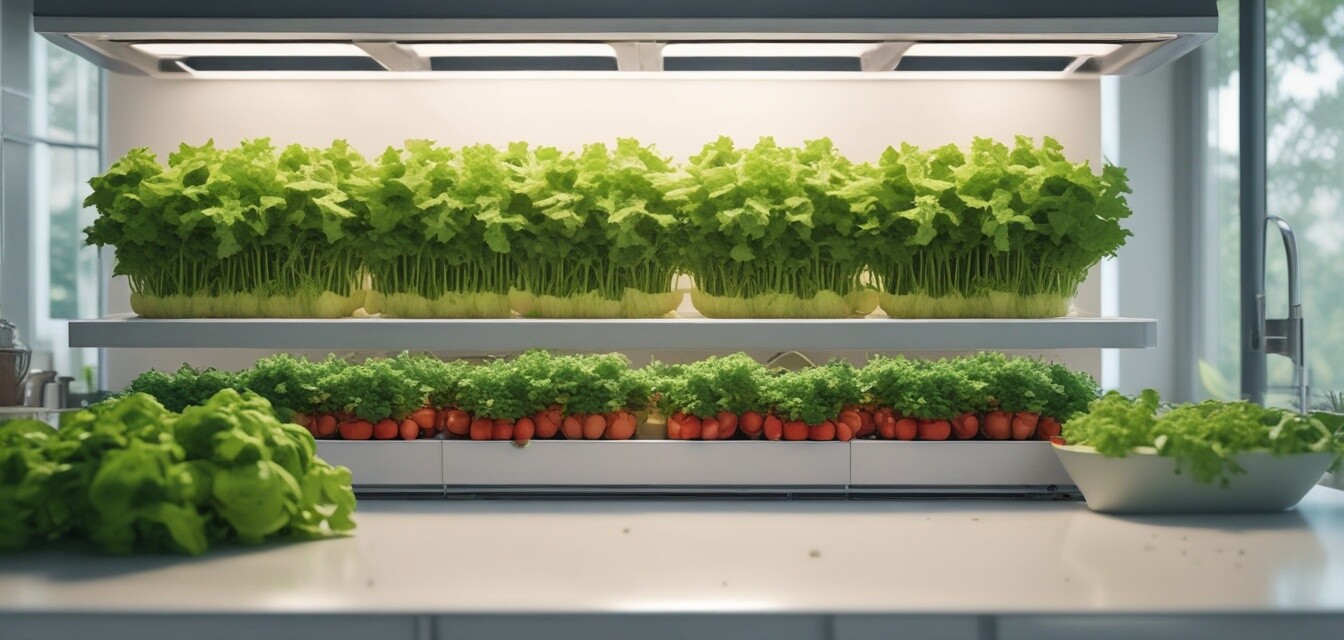
DIY Hydroponic Salad Bar: Fresh Greens at Home
- Learn how to build a hydroponic salad bar to provide fresh greens year-round.
- Understand the necessary materials and steps for construction.
- Explore tips for maintaining your hydroponic system efficiently.
- Discover the benefits of growing your own salad ingredients at home.
If you're looking to eat healthier and ensure a steady supply of fresh greens, a DIY hydroponic salad bar might be the solution you're seeking! This project will not only beautify your space but also provide you with delicious and nutritious vegetables all year round. Let’s dive into how you can create your very own hydroponic salad bar.
What is Hydroponic Gardening?
Hydroponic gardening is a method of growing plants without soil. This system uses nutrient-rich water solutions that allow the roots to absorb essential nutrients directly. This method allows for faster growth, higher yields, and efficient water use.
Benefits of a Hydroponic Salad Bar
- Year-round access to fresh greens and herbs.
- Space-efficient growing method suitable for small homes.
- Reduction in grocery bills by growing your own produce.
- Environmentally friendly, as it uses less water than traditional gardening.
Materials Needed
Before you start building your DIY hydroponic salad bar, gather the following materials:
- Plastic containers: Choose containers that are food-safe and suitable for growing plants.
- Nutrient solution: A balanced hydroponic nutrient solution tailored for leafy greens.
- Pumps and aeration systems: To keep the nutrient solution circulating and well-oxygenated.
- Growing media: Clay pellets or rock wool to support the plants.
- Seeds: Select a variety of salad greens like lettuce, spinach, or kale.
- LED grow lights: Ensure your plants receive adequate light for growth.
Step-by-Step Instructions
1. Design Your Salad Bar
Decide on the location of your salad bar. It can be a simple box or a tiered vertical design to maximize space. Here is a basic overview of a simple layout:
| Component | Description |
|---|---|
| Base | Sturdy container to hold nutrient water. |
| Growing Tray | Tray to hold your growing media and plants. |
| Pumps | Tools to circulate nutrient solution. |
| Lighting | LED grow lights for photosynthesis. |
2. Prepare Your Containers
Cut holes in the growing tray to fit your plastic containers or net pots. Ensure they fit snugly to prevent excess dripping.
3. Setup the Hydroponic System
Following the manufacturer's instructions, set up the pumps and aeration systems to circulate the solution. Connect all necessary tubing and ensure seals are tight.
4. Add Nutrient Solution
Fill your base container with the nutrient solution. Make sure to monitor the pH and nutrient levels regularly.
5. Plant Your Seeds
Place the seeds in the growing media. Ensure they are covered as specified for each type of plant. Keep the area moist to encourage germination.
6. Provide Adequate Light
Position your LED grow lights above the salad bar. Most leafy greens require 12-16 hours of light per day for optimal growth.
Maintenance Tips
Essential tips for successful hydroponic gardening:
- Regularly check the pH and nutrient levels of your solution.
- Clean the system every few weeks to prevent algae and bacteria growth.
- Rotate plants to ensure even light distribution.
- Diagnose any plant issues promptly to prevent spread.
Frequently Asked Questions
Can I grow herbs in my hydroponic salad bar?
Absolutely! Many herbs thrive in hydroponic systems, so feel free to mix in basil, cilantro, or any favorite herb.
How often should I change the nutrient solution?
Changing the nutrient solution every 2-3 weeks is generally recommended to keep the plants healthy.
Where can I find more DIY hydroponic ideas?
For more creative projects, check out our DIY Projects section.
Pros
- Fresh produce at your fingertips.
- Customizable to fit any space.
- Fun and educational for families.
Cons
- Initial investment can be high.
- Requires regular monitoring and maintenance.
- Small learning curve for beginners.
Conclusion
Building your own DIY hydroponic salad bar is a fulfilling project that provides not only health benefits but also a great hobby. By following the steps above, you can create a vibrant and productive garden right in your home, ensuring access to fresh greens year-round. Get started on your hydroponic journey today!

